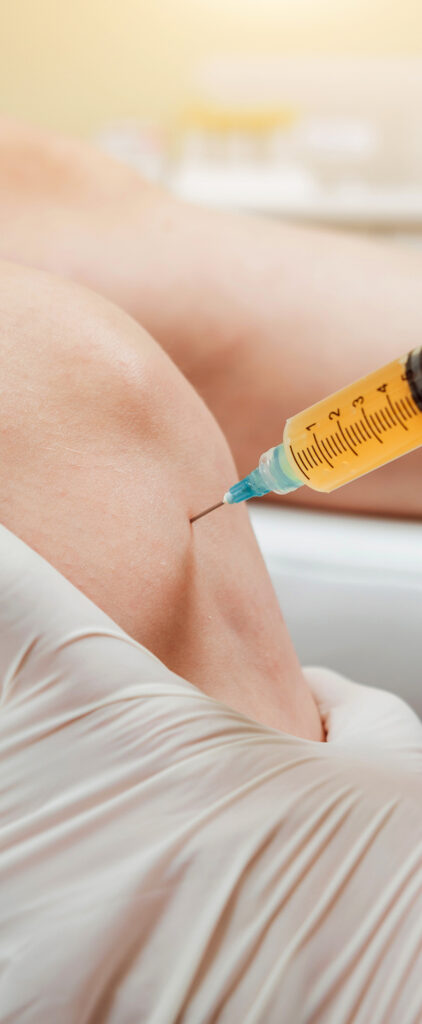Prolotherapy
Prolotherapy is a non-surgical treatment for chronic pain and musculoskeletal injuries. Prolotherapy uses proliferation therapy to regenerate and repair damaged tissue.
How is Prolotherapy Done?
During a prolotherapy session, your healthcare provider injects the damaged ligaments with a solution that creates micro-tears. The body then repairs these tears by releasing chemicals that signal for new tissue growth and collagen development. Ultrasound or videofluoroscopy is used to provide a visual map and precisely targeted injections. These injections stimulate the body’s healing response to improve your ligament function and pain level.
What Does The Prolotherapy Solution Consist of?
The prolotherapy solution consists of dextrose (sugar water), saline, and sarapin, along with local anesthetics, such as lidocaine.
How Long Does the Prolotherapy Procedure Take?
Depending on the part of the body the procedure is taking place, prolotherapy treatments typically take about 45 minutes from start to finish.
Treatments are usually performed an average of 3 to 6 times over the course of every 4 to 6 weeks. However, some patients may only need 1 or 2 treatments. Be sure to maintain your follow-up schedule once you get started so that our medical providers can re-assess and track your progress at appropriate intervals.










